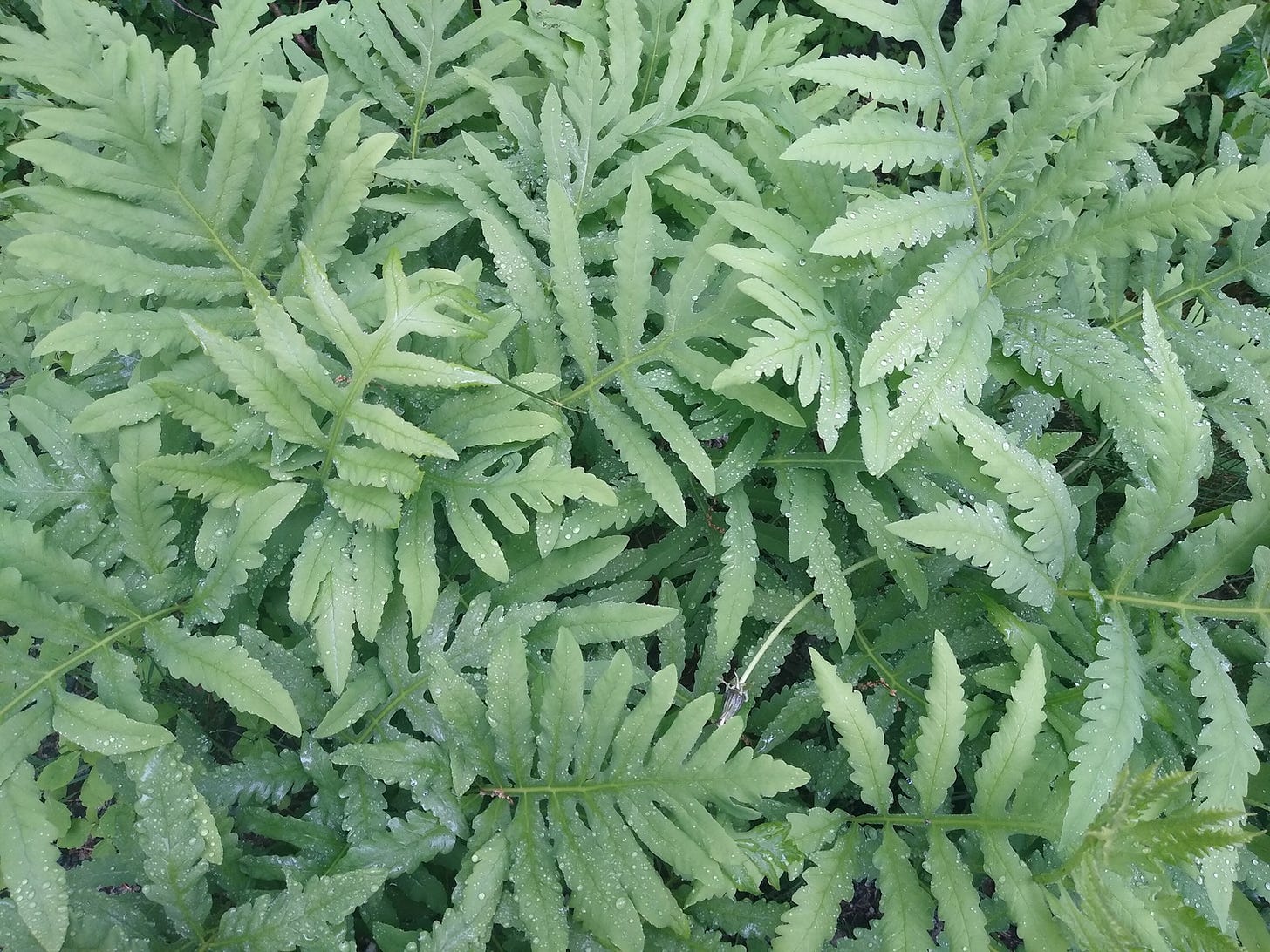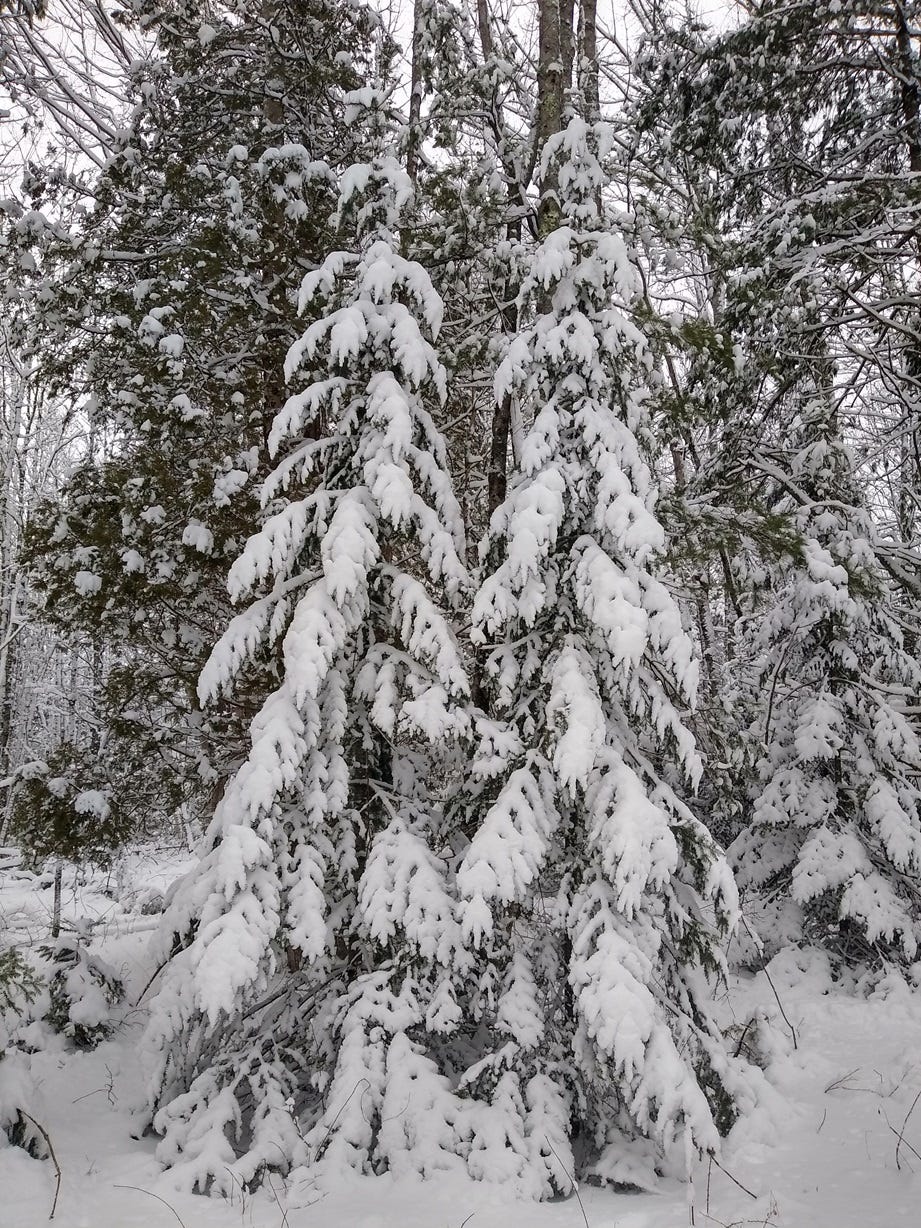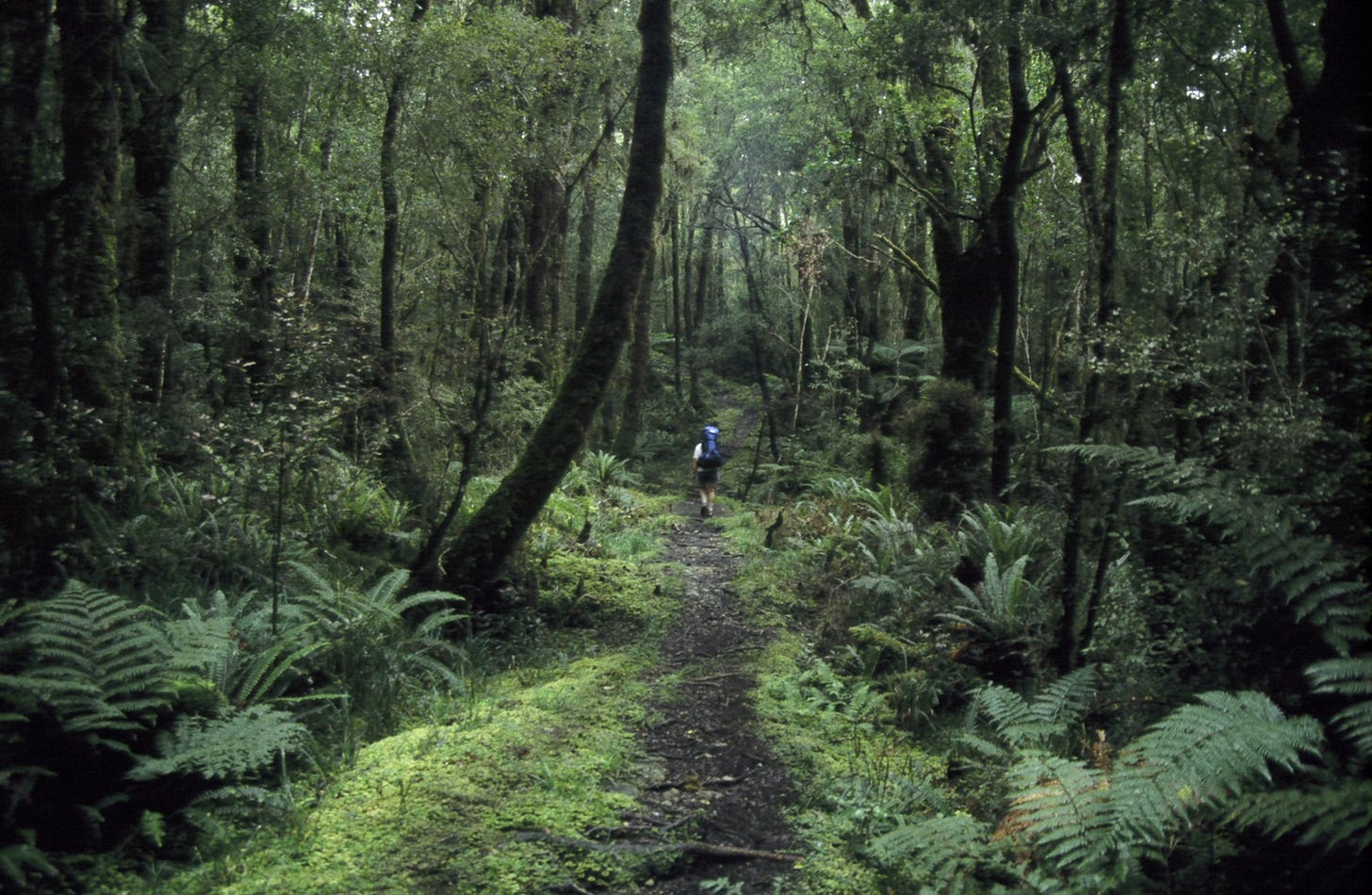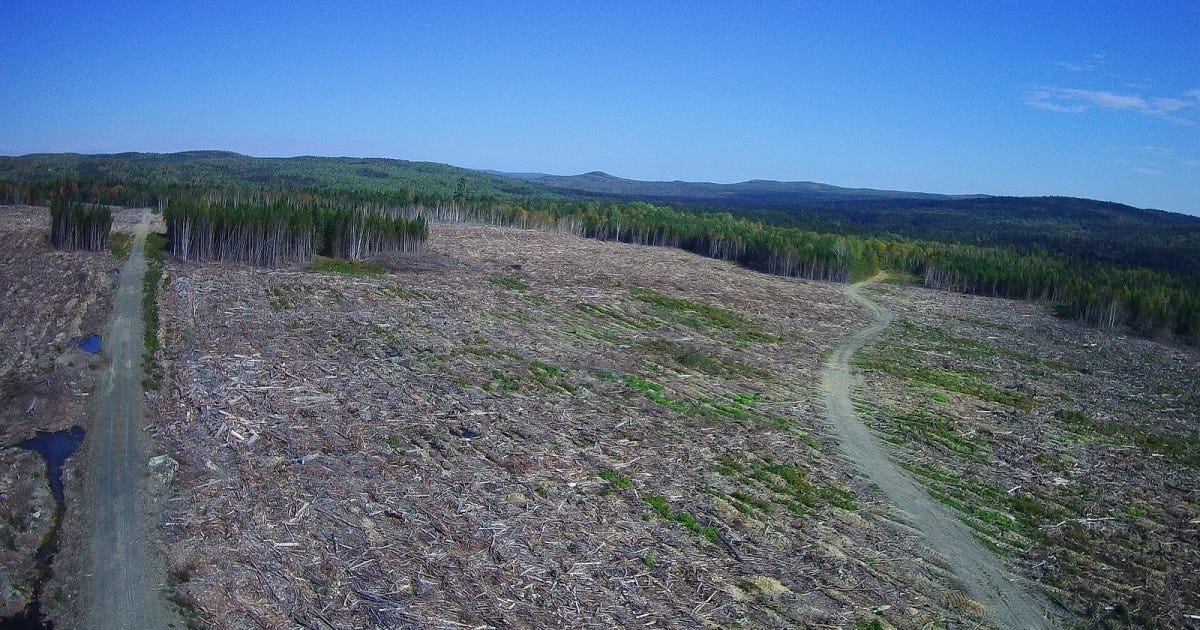Hello everyone:
As always, please remember to scroll past the end of the essay to read this week’s curated collection of Anthropocene news.
Now on to this week’s writing:
As far as I understand it, whatever the universe is is very thinly dotted with light. Life on Earth (and perhaps elsewhere) exists because, in the magical creation of biology from chemistry, it learned to feed on its local light. Ever since, plants have made hay while the sun shines, generating the vast green growth that feeds everything we think of as home.
Look closely at the greenery. The forms of the grasses, fescues, clovers, and more that make hay – sweet and swaying photosynthetic wands with modest leaves and flowers – are part of the visual alphabet of forms that life has invented to turn photons into food.
Across the spectrum of botanical structures, and throughout the myriad forms of insects and larger animals which exist only because of the light-eating inventiveness of plants, the forms are limited but the variations are infinite. (Just ask the beetles if you don’t believe me.) Cells and spores, ferns and staghorn sumac, radiolarians and blue whales seem to signify extraordinary difference but are really variations on a few themes.
From these themes life writes what are, as far as we know, the most extraordinary and complex stories within whatever this universe is.
Out of the darkness comes the light, and out of the light come these stories, including us. We are, each of us, whether sedge, raccoon, gnu, baobab, darter, or whale shark, a scaffold built to reach and harness the light.
Like keys on a piano, tones across the skin of a drum, or strings on a sitar, the list of natural forms can be played to build an infinite variety of worlds within our world. I’m thinking of the spirals of conch and sunflower, the tessellations of a honeycomb, the riverine meander of an asp, and above all the branching forms of plants.
Infinity and mystery, which are two graceful synonyms for our ignorance, surround these miracles. Whatever is beyond the universe is darker than the fields beyond our consciousness. But also within the universe most of what surrounds us – dark matter? dark energy? – is beyond our ken. And then, down at the quantum level, where all familiar form gives way, it seems to me that we find only the ingredients for faith or humility.
We should not forget that all the forms of matter that grace our visible world are only inkblots in those greater, stranger realities. But the visible miracles are enough. Astrophysicists, cosmologists, physicists, and others will push the envelope of our understanding a little wider, but the miraculous will persist because the envelope, like the universe, is probably larger on the outside than the inside.
I’ll let Wendell Berry bring this notion of the miraculous back to earth:
The miraculous is not extraordinary but the common mode of existence. It is our daily bread. Whoever really has considered the lilies of the field or the birds of the air and pondered the improbability of their existence in this warm world within the cold and empty stellar distances will hardly balk at the turning of water into wine — which was, after all, a very small miracle. We forget the greater and still continuing miracle by which water (with soil and sunlight) is turned into grapes.
I’ve spent a fair amount of my life wandering paths through the arched hallways of trees in New England and New Zealand. And I’ve always been fascinated with the ways in which trees reach for the light. I never made a study of it, though. This is one of those fascinations which is structured more around the open-eyed question than the search for answers.
But familiarity bred contentment, and I’ve been happy observing the brawny broad branches of oaks stretching laterally, the young spruces and pines with their whorls tapering to a finger pointing skyward, or the fern trees pushing their fountain of giant fronds a little higher each year. The dendritic structure of deciduous trees, branches begetting smaller branches like a river spreading into an intricate delta, are hypnotizing. Light and rain pass through to the forest floor, feeding the multi-story community of greenery – leaves, shrubs, plants, moss, lichens – which all descend from those first photosynthetic cells that birthed biology.
Leonardo da Vinci observed “all the branches of a tree at every stage of its height when put together are equal in thickness to the trunk [below them].” In other words, when a larger branch splits into multiple smaller branches, the surface area of the smaller ones equal the larger one. This is a mathematical grace that builds an arboreal one, and we should count ourselves lucky every time we trod upon paths beneath them.
For a much deeper dive into the grace and structure of trees, I recommend “The Things Trees Know,” an essay by William Bryant Logan that’s collected in the excellent Old Growth, an anthology of “the best writing about trees in Orion magazine.” (The essay was first published in Logan’s book Sprout Lands: Tending the Endless Gifts of Trees, which I have not read.) Logan opens with this lovely line – “To study how trees grow is to admire not only their persistence but also their imagination” – and then brilliantly equates that growth with jazz, laying out how “every plant plays upon six choices” to grow in one of two dozen patterns. Coltrane, he says, might riff for a quarter hour, but “a tree’s performance may go on for half a millennium or more.”
A plant from its seed, like us from our womb, emerge according to a plan: to grow in a form that resembles our parents. Life is the improvisation that happens to that plan. Trees enter the world with the possibility of reproducing exactly the shape their parents intended. Why then, Logan asks rhetorically, “is a forest not an array like the bottles of different brands of seltzer on the supermarket shelf?”
Because of the many accidents.
Because of the uncertain world.
Because of heat and cold, storm and wind, pests and diseases.
Because of neighbors, those that are rooted, and others that are two-, four-, six-, and eight-legged.
Because of opportune openings to the sun.
Because of the subsequent improvisation.If this sounds like the last few decades of your life, you’re not alone.
The elegance of symmetry transitions to the grace of survival within the hard realities of aging in a world of storm, drought, freezing rain, bark beetles, and fungal infection. Sometimes they, and we, fall and don’t get up. (Trees, though, have the option to send up branches from the fallen trunk to become new trees, as if we had collapsed and held up arms that then became our kids.) Mostly, though, trees figure it out even if they’re disfigured, playing variations on their ancient themes as they scaffold themselves to reach and harness the light.
This is the ordinary beauty and tragedy of life, the song among songs and the story among stories.
In the Anthropocene, though, we have laid much heavier tragedies upon the living world. These tragedies collapse the scaffolding everywhere we look: cornfields atop grasslands and soybean farms atop rainforest, soybean- and corn-fed cattle upon plains, reservoirs above valleys, parking lots over wetlands, cities across mangroves and coastlines, and so much more. Even the atmosphere grows denser in a hotter world.
The sun still shines, but far too much of the hay being made is stored in the wrong things and in the wrong places. The industrial blender we call civilization takes in forests and grasslands and the productivity of coral reefs in order to provide, mostly for wealthier nations, the things we don’t really want, the large houses we don’t really use, and the markets we don’t really need.
Behind the curtain, hundreds of billions of barrels of stored sunlight have been extracted to power lives we don’t love and to create a future in which very little life will thrive. These photons, and the markets that feed on them, relentlessly benefit the roughly 1% of humans who own nearly half of global wealth. These are the wrong scaffolds, and they cannot stand.
And this is the world that a billion more humans emerge into every dozen years or so. Each of them, like each of us, will be complicit but trapped in this Anthropocene life. These systems built for us serve us only indirectly, with direct benefits for the builders of systems and none at all for the living world from which the systems were built. For our sanity, we have to remember the "trapped" part, which is a conditional form of innocence, and look after ourselves even as we look for a way out or forward that reduces the harm.
All of which means that far too many of us stand at too great a distance from the light, and that the stories being written by life are too often cut short or not allowed to be written at all. But biology did not emerge from chemistry to exist in the service of a single species, and photosynthesis has a far greater purpose than us. Much of what ails the Earth is caused by an assumption of human supremacy, which might be defined as the delusion that we own the light.
Religion has played a role here, though in the end religion is a function of culture. To the extent we place God or gods above the light, and ourselves next to them, we’re acting as if culture and faith and religion weren’t grass-fed ideas from a grass-fed brain. The scientist and philosopher Gregory Bateson articulated this brilliantly:
If you put God outside and set him vis-a-vis his creation, and if you have the idea that you are created in his image, you will logically and naturally see yourself as outside and against the things around you. And as you arrogate all mind to yourself, you will see the world around you as mindless and therefore not entitled to moral or ethical consideration. The environment will seem to be yours to exploit.
If this is your estimate of your relation to nature and you have an advanced technology, your likelihood of survival will be that of a snowball in hell.
I’m not sure who keeps bringing snowballs into hell and expecting miracles, but it doesn’t seem to be working out. These days, a snowball can’t be trusted to thrive even in Maine.
The way we reach for the light matters. This is existential. What we take to get what markets want is murderously different than taking only what we need from the community of other beings – and their needs – before giving back the energy we borrowed.
I’m not here this week to define what we need, or to articulate all the wondrous work being done to reshape civilization’s relationship with the light. (A society powered by photon-absorbing panels is a good start.) I only want to reiterate what I just said: the way we reach for the light matters.
I’m not a fan of binary thinking, but here’s a lovely exception from Albert Einstein: “There are only two ways to live your life. One is as though nothing is a miracle. The other is as though everything is a miracle.”
Einstein here echoes Ralph Waldo Emerson – “The invariable mark of wisdom is to see the miraculous in the common” – and is echoed by Loren Eisely:
We forget that nature itself is one vast miracle transcending the reality of night and nothingness. We forget that each one of us in his personal life repeats that miracle.
I’ll close, then, not with another poetic line about light but with a borrowed anecdote about someone who sought a more meaningful relationship with it. I’ll let you decide its relevance.
Ironically, this comes from the great and honest storytelling magazine, The Sun. It’s about A.J. Muste, a lifelong clergyman and peace/political activist who,
during the Vietnam War, stood in front of the White House night after night with a candle – sometimes alone. A reporter interviewed him one evening as he stood there in the rain, “Mr. Muste,” the reporter said, “do you really think you are going to change the policies of this country by standing out here alone at night with a candle?” A. J. responded, “Oh, I don’t do this to change the country. I do this so the country won’t change me.”
Thanks for sticking with me.
In other Anthropocene news:
I’ll start this week’s offerings with a few interviews:
From the Times, an interview with Dr. Ayana Elizabeth Johnson, who offers a lovely calm urgency, or what I might call an optimistic pessimism, about the scale of the climate and biodiversity crises. The path ahead isn’t helped by either optimism or pessimism; it’s helped by doing the work that needs doing and that we already know how to do.
Perhaps it’s worth saying it’s OK not to be hopeful. I feel like there’s so much emphasis in our society on being hopeful, as if that’s the answer to unlocking everything. I’m not a hopeful person. I’m not an optimist. I see the data. I see what’s coming. But I also see the full range of possible futures. I feel like there’s so much that we could create, and the question that motivates me right now is, What if we get it right? It’s not going to be perfect. There’s no scenario in which we have a perfectly pristine planet, given that we have eight billion people living on it now. But how can we each be a part of getting it as right as possible?
From The Overpopulation Project, an interview with Chidera Benoit, the Executive Director of the Population Explosion Awareness Initiative in Nigeria. I recommend it for anyone interested in hearing on-the-ground insights and a reality check from an activist in a country at the heart of the African population boom.
From Volts, an interview with Caroline Spears of Climate Cabinet, which focuses on supporting state and local “climate champions” in down-ballot political races around the U.S. In their “Moneyball for climate” approach to elections, Climate Cabinet runs a complex set of numbers to determine which state, local, and municipal races will make the most impact in shifting climate policy quickly and effectively.
From ProPublica, a long, fascinating, and damning narrative about 3M and its secrets and lies about PFAS contamination. The article follows a scientist at 3M who kept finding PFOS in every human blood sample she could find across the U.S. The company told her very little, other than the lie that the chemicals were safe for human consumption. It’s hard to overestimate just how destructive 3M’s behavior has been, given that the world is now soaked in these “forever chemicals,” which are in fact incredibly harmful to human and environmental health.
From the Revelator, the horrible, no-good biomass industry is tearing down forests to make pellets to be burned and calling it a climate solution. And there are still fools in government who believe the lie.
From Grist, the many problems with the markets’ current obsession with treating forests as climate solutions to be invested in:
Indigenous peoples are getting pushed out of their lands because of carbon offset projects. Native grasslands are getting turned into forests, even though grasslands themselves are huge, overlooked reservoirs of carbon. And offset projects in forests, more often than not, fail to achieve all of the emissions benefits their backers had promised.
From
of Fearless Green here on Substack, HOME, an enormous and invaluable directory of nature-focused publications on Substack. So far, Rebecca has listed 217 publications from 12 countries. You can search the directory alphabetically, or by Region or Theme. Take a look, please. Rebecca has done an amazing job here and provided us a great service. Support HOME if you can.From Anthropocene, a short but deep look at the question of whether climate change is finally bridging the political divide in the U.S. The answer is complicated but cautiously optimistic.
From
at the Global Nature Beat, another of his weekly round-ups of news and reporting resources (and more) on biodiversity and nature policy. Mike provides an incredible resource here for anyone looking to know what’s happening around the world and behind the scenes. Please, take a look. You’ll be impressed and intrigued.










Beautiful essay, Jason. Quietly starting, quietly ending. Love and compassion might be seen as forms of illumination that our spirits shine out onto the world in all its astounding variety of beautiful forms. Your essay is such a ray it seems to me.
It is pre dawn as I write this, sitting in my living room with my morning coffee. I hear a chorus of birds singing and communicating with each other and with the Earth.
My avian friends are sitting in a tree right outside my house, about 5 metres (15 ft) from my front door. Soon I will go out and lay down some seed for them and some nuts for my squirrel friends. I will then, as I do every morning, sit in my chair and take it all in.
I live in the city of Toronto, a most urban of cities. Yet, Nature is here with me; and I am with Nature.